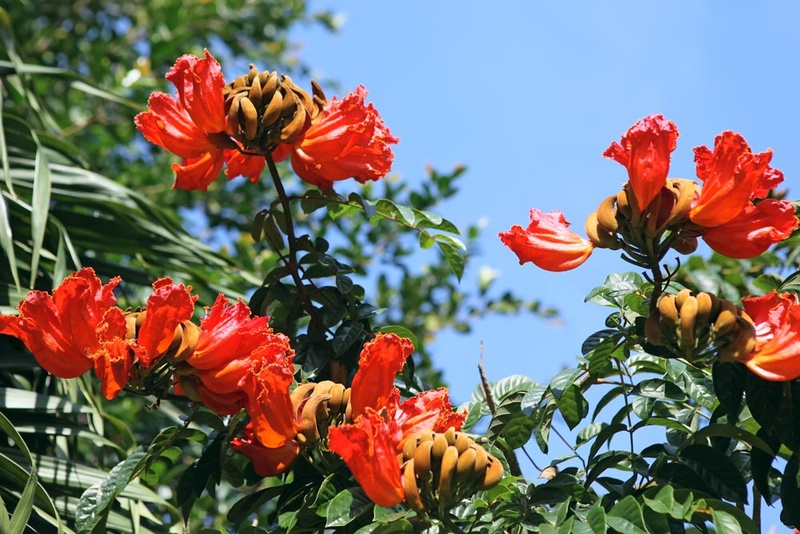
Invasive Plants: Don’t Bring These Home
Invasive plants are non-native species that, when left to grow unchecked, spread over plant communities and alter the local ecology. Florida is home to myriad invasive plant species from palms to grasses to trees. Educated homeowners should avoid installing these plants in their landscaping.
With several major ports of entry into the United States, Florida over the years has received countless plant and animal immigrants. Many of these have been accompanied by pests and pathogens. Others qualify as pests themselves—invasive species that have threatened Florida’s native plant and animal life. Examples of key offenders are feral hogs, Burmese pythons, the emerald ash borer, the water hyacinth, and lygodium ferns. In this blog we focus on invasive plant species.
What are Invasive Plant Species?
The Florida Exotic Pest Council divides invasive plants species into two groups: Category 1 and Category 2. The first group are those plants that have altered native plant communities. They have either pushed out or become a hybrid with native species and changed the ecology of the area. They have caused ecological damage.
The second category of plants are those that have spread and pose a danger to the native ecology but haven’t altered plant communities yet.
Invasive plant species are not kept in check as they are in their home countries because their natural deterrents and controls do not exist in Florida.
How Do They Get Here?
Invasive plant species come into Florida both accidentally and intentionally. They may be deliberately introduced for horticultural or agricultural purposes. Or they may hitchhike into the state in cargo, on other plants, etc. If any of these plants get established, spread, push out native plants and alter the ecosystem, they are considered invasive.
Across the State
Invasive plant species are found in Florida both on a large scale and small scale. Large-scale occurrences of invasive plants include cogon grass in Central Florida pine forests, Old World climbing fern on cypress trees in South Florida, air potato in Central Florida hardwoods, Japanese climbing fern in northwest Florida pine forests, melaleuca in southwest Florida pines, and blankets of kudzu throughout the state.
In Your Backyard
Uneducated homeowners can unwittingly bring invasive plants onto their properties, install them in their landscaping, and experience runaway plantings that they can’t get rid of.
Homeowners should avoid installing these plants in landscaping:
Palms: areca, Burmese fishtail, Chinese fan, queen, Senegal date
Shrubs: castor bean, Chinese privet, Christmas cassia, day jessamine, Gold Coast jasmine, half flower, heavenly bamboo, kopsia, lantana, non-native firebush, orange jessamine, strawberry guava, Surinam cherry, twinleaf nightshade, yellow alder
Herbaceous Plants: balloon plant, blue porterweed, bowstring hemp, cerulean flaxlily, chandlier plant, devil’s backbone, elephant ear, four o’clock, fringed spiderwort, Ganges primrose, grass-leafed orchid, green shrimp plant, ground orchid, inch plant, life plant, Madagascar periwinkle, Mexican clover, Mexican petunia, oyster plant, scarlet milkweed, wandering Jew.
Grasses: Burma reed, giant reed, molasses grass, Napier grass, Natal grass, umbrella plant
Ferns: Asian sword, common stag horn, Old World climbing fern, sword, wart
Aquatic plants: giant salvinia, Indian shot, snowflake, water lettuce, water spangles, water hyacinth
Trees: African tulip tree, Australian almond, Australian pine, bishopwood, bottlerush, Brazilian pepper, carrotwood, chinaberry, Governor’s plum, Guava, Laurel fig, Loquat, mango, orchid tree, sea hibiscus, trumpet tree, umbrella tree.
For complete and current lists, visit The Florida Exotic Pest Plant Council’s invasive species lists, which it revises every two years.
Additional Resources:
http://www.broward.org/Parks/FindNature/Pages/InvasivePlantsinOurYards.aspx#herbs
https://www.freshfromflorida.com/Divisions-Offices/Florida-Forest-Service/Our-Forests/Forest-Health/Invasive-Non-Native-Plants
https://www.nature.org/ourinitiatives/regions/northamerica/unitedstates/florida/howwework/cisma.xml
#floralawn #invasiveplants #lakeland #kudzu #landscapedesign